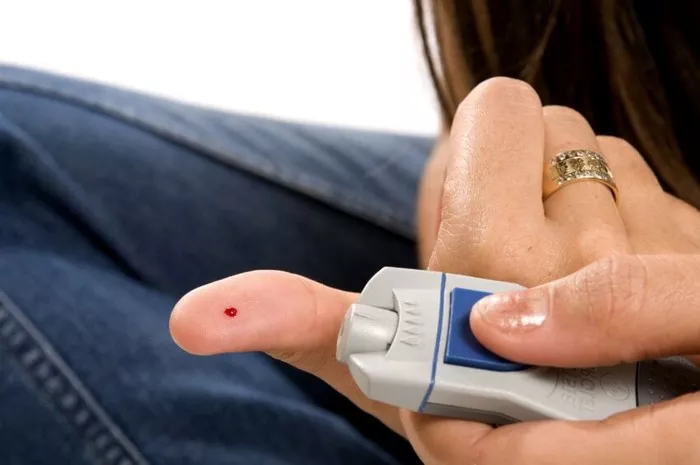Blood glucose levels are a critical indicator of metabolic health and a vital marker for diagnosing and managing diabetes. While fasting blood glucose levels are commonly used to evaluate glucose metabolism, non-fasting or postprandial glucose levels also provide significant insights. This article aims to elucidate what constitutes a normal non-fasting glucose level, how it is measured, and its implications for overall health.
What is Blood Glucose?
Blood glucose, or blood sugar, is the primary source of energy for the body’s cells. It comes from the foods we eat, primarily carbohydrates, and is transported through the bloodstream to various tissues. The regulation of blood glucose levels involves a complex interplay between insulin, a hormone produced by the pancreas, and other metabolic processes.
Understanding Non-Fasting Glucose Levels
Non-fasting glucose levels refer to the concentration of glucose in the blood at any point in time that is not influenced by fasting conditions. These levels are usually measured after meals and are termed postprandial glucose levels. The typical window for measuring postprandial glucose is about two hours after eating, which helps assess how efficiently the body processes and clears glucose from the bloodstream.
Normal Range for Non-Fasting Glucose Levels
The American Diabetes Association (ADA) provides guidelines for normal blood glucose levels. For non-fasting, or postprandial glucose levels, a normal range is generally considered to be less than 140 mg/dL (7.8 mmol/L) two hours after eating. Levels between 140 mg/dL and 199 mg/dL (7.8 to 11.0 mmol/L) are indicative of impaired glucose tolerance (IGT), a condition often referred to as prediabetes. Levels of 200 mg/dL (11.1 mmol/L) or higher are typically indicative of diabetes.
Factors Affecting Non-Fasting Glucose Levels
Several factors influence non-fasting glucose levels, including:
- Diet: The type, quantity, and timing of food intake significantly impact postprandial glucose levels. Foods high in carbohydrates, especially simple sugars, can cause sharp spikes in blood glucose.
- Physical Activity: Exercise increases glucose uptake by muscles, which can lower blood glucose levels. Regular physical activity enhances insulin sensitivity, helping maintain normal glucose levels.
- Insulin Sensitivity: Insulin resistance, a hallmark of type 2 diabetes, impairs the body’s ability to utilize insulin effectively, leading to elevated postprandial glucose levels.
- Medications: Various medications, particularly those used to manage diabetes (e.g., insulin, metformin), directly affect blood glucose levels.
- Stress and Illness: Both physical and psychological stress can increase blood glucose levels due to the release of stress hormones like cortisol.
- Circadian Rhythms: Blood glucose levels naturally fluctuate throughout the day due to circadian rhythms, with potential variations in the body’s glucose metabolism during different times of the day.
Implications of Abnormal Non-Fasting Glucose Levels
Persistently elevated non-fasting glucose levels are a sign of underlying metabolic dysfunction. They are particularly concerning because they can lead to several health complications if left unaddressed.
- Prediabetes and Diabetes: High postprandial glucose levels are an early indicator of prediabetes and diabetes. Early detection and intervention are crucial for preventing progression to full-blown diabetes.
- Cardiovascular Disease: Elevated glucose levels contribute to the development of cardiovascular diseases by promoting atherosclerosis, hypertension, and inflammation.
- Neuropathy: High blood glucose can damage nerves, leading to diabetic neuropathy, which is characterized by pain, tingling, or loss of sensation in the extremities.
- Nephropathy: Kidney damage is another severe complication of prolonged hyperglycemia, potentially leading to chronic kidney disease and renal failure.
- Retinopathy: Diabetes is a leading cause of blindness due to damage to the blood vessels in the retina, resulting from prolonged elevated blood glucose levels.
Monitoring Non-Fasting Glucose Levels
Regular monitoring of non-fasting glucose levels is essential for individuals at risk of or diagnosed with diabetes. Several methods are used to monitor these levels:
- Self-Monitoring of Blood Glucose (SMBG): Using a glucose meter, individuals can measure their blood glucose levels at home. This is particularly useful for monitoring postprandial glucose levels and making dietary adjustments.
- Continuous Glucose Monitoring (CGM): CGM systems provide real-time glucose readings throughout the day and night, offering detailed insights into glucose patterns and trends.
- HbA1c Test: While HbA1c reflects average blood glucose levels over the past 2-3 months, it is a useful complementary test to understand overall glucose control, including postprandial spikes.
Strategies for Managing Non-Fasting Glucose Levels
Effective management of non-fasting glucose levels involves a multifaceted approach, including lifestyle modifications, dietary changes, and possibly medications.
Dietary Modifications:
- Low Glycemic Index (GI) Foods: Foods with a low GI are digested and absorbed more slowly, leading to gradual increases in blood glucose levels. Examples include whole grains, legumes, and non-starchy vegetables.
- Balanced Meals: Combining carbohydrates with proteins and fats can slow down the absorption of glucose, preventing sharp spikes.
- Portion Control: Eating smaller, more frequent meals can help maintain stable blood glucose levels throughout the day.
- Regular Physical Activity: Exercise enhances insulin sensitivity and facilitates glucose uptake by muscles. Both aerobic exercises (like walking, running) and anaerobic exercises (like weightlifting) are beneficial.
- Weight Management: Achieving and maintaining a healthy weight can significantly improve insulin sensitivity and help regulate blood glucose levels.
- Medications: For individuals with diabetes or prediabetes, medications may be necessary to control blood glucose levels. Common medications include metformin, sulfonylureas, and insulin therapy.
- Stress Management: Techniques such as mindfulness, meditation, and yoga can help reduce stress levels and consequently improve blood glucose control.
- Regular Monitoring: Keeping track of blood glucose levels, both fasting and non-fasting, helps in making informed decisions about diet, exercise, and medication adjustments.
Conclusion
Understanding what constitutes a normal non-fasting glucose level and how to maintain it is crucial for preventing and managing diabetes and its complications. While fasting glucose levels provide important baseline information, non-fasting levels offer additional insights into how the body handles glucose throughout the day. By incorporating healthy dietary habits, regular physical activity, and appropriate medical interventions, individuals can effectively manage their blood glucose levels and reduce the risk of long-term health issues. Regular monitoring and proactive management are the keys to maintaining optimal metabolic health.
Related topics:



























